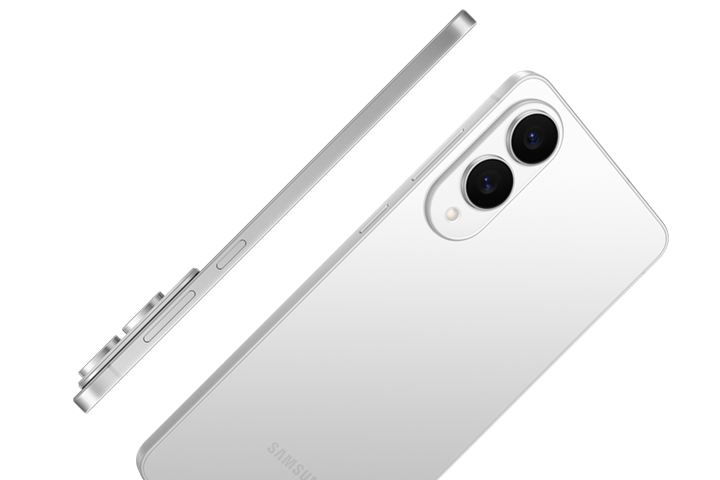You’re looking at Samsung’s latest top-tier phone, the Galaxy S25 Edge—a device that continues the brand’s long-standing push for slim yet capable smartphones. From the Galaxy A8 in 2015 to the even older Ultra Edition series, Samsung has a history of balancing thin design with real-world usability. At 5.8mm, the S25 Edge is now its slimmest yet, but how much do you trade off for that profile?
Compared to the regular S25, it offers a bigger screen and sharper main camera but drops the telephoto lens and battery capacity. It’s also noticeably thinner than the feature-packed S25 Ultra, which includes the S Pen and stronger zoom. For users across Lagos, Nairobi, Accra, or Johannesburg, the question is whether this design-focused flagship delivers enough where it matters.
In this review, we’ll look at how it performs daily, how well the camera holds up, and how it handles networks like MTN, Safaricom, Vodacom, and Airtel. We’ll also analyse how the battery performs in hotter climates. Let’s unpack everything.
What we like about Galaxy S25 Edge:
- Sleek design
- Strong build quality (IP68-rated )
- Versatile 50MP periscope zoom camera
- High peak screen
- Same Galaxy AI features as Ultra
What to consider before buying:
- Charger not included in the box
- No telephoto lens
- Expensive
- Samsung Pay features limited in some African countries
Key Specs
| Galaxy S25 Edge | |
|---|---|
| Starting price | ₦1,736,068 / $1,099 / £1,099 / AU$1,849 |
| Display | 6.7-inch AMOLED |
| Refresh rate | 120Hz |
| Camera | 200MP main with 10x digital zoom, 12MP ultrawide, 12MP selfie |
| Chipset | Snapdragon 8 Elite for Galaxy |
| RAM | 12GB |
| Storage | 256GB, 512GB |
| Battery and Charging | 3,900 mAh, 25W wired, fast wireless charging |
| Operating system | Android 15 with One UI 7 |
| Water/dust resistance | IP68 |
| Weight | 163 grams |
| Colours | Titanium Silver, Titanium Jetblack, Titanium Icyblue |
Design and Build

The Galaxy S25 Edge is noticeably thinner and lighter than most flagships you’ve probably held this year. Samsung has gone with a clean titanium frame, and once you pick it up, the weight difference is one of the first things you feel. The design is actually quite boxy rather than edgy, which makes you wonder why they didn’t just call it the Galaxy S25 Slim instead. Anyone hearing ‘Edge’ probably expects curved sides, but Samsung’s naming department had other plans. That said, the ultra-slim feel might not strike everyone as dramatically different unless you’re comparing it side by side with chunkier phones like the Fold 6.
It comes in subtle colors, nothing loud, which might not excite everyone, but the muted palette works well with the minimalist build. The rounded edges and matte finish give it a smooth grip and do a good job of hiding fingerprints, especially useful in humid or dusty places like Accra or Nairobi. And at 196g, it’s comfortably light without feeling fragile.
Samsung has kept the packaging just as lean, with no charger in the box—something many users are still not thrilled about. Still, the use of recycled materials in the frame and buttons adds a nice touch for anyone paying attention to sustainability.
The phone’s IP68 rating helps it stay ready for a sudden downpour in Lagos or a dry spell in northern Kenya, and the combination of aluminium and Gorilla Glass Victus 3 keeps it feeling both premium and durable. The display is tall, which might be a reach for some, but overall, the design sticks to the goal: keep it slim, clean, and practical.
Display
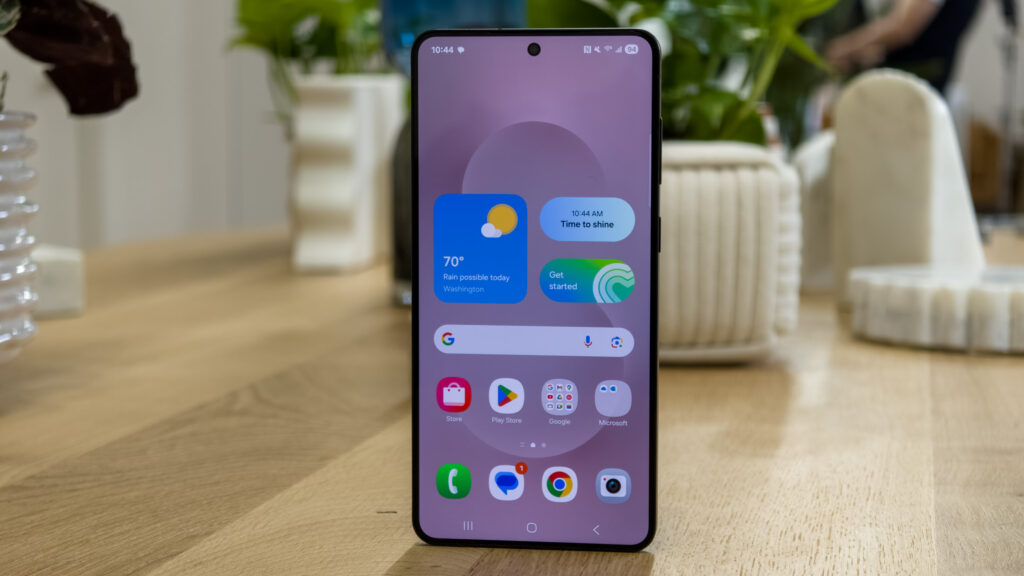
The Galaxy S25 Edge comes with a 6.7-inch OLED display at QHD+ resolution and a 120Hz adaptive refresh rate—essentially the same setup as the Galaxy S25 Plus. It looks great in real use, with sharp details, vibrant colours, and excellent visibility at wide angles. The panel hits nearly 2,400 nits of peak brightness, so whether you’re outdoors or inside without power, it holds up well. It also dims below 1 nit for comfortable use in the dark.
Samsung didn’t bring over the Gorilla Armour coating from the Ultra, which is a noticeable omission if you’re paying over ₦900,000 for a flagship. That said, Gorilla Glass Victus 3 still holds its own against the usual drops and scrapes. The bezels are trimmed down just enough to make the size feel manageable, especially compared to the S25 Ultra’s 6.9-inch frame.
Biometrics are handled by an ultrasonic fingerprint sensor and basic face unlock. The fingerprint scanner is quick and reliable, which is all you really need. Scrolling, animations, and video playback feel smooth thanks to the adaptive refresh rate, and streaming or gaming looks and feels premium. For anyone who uses their phone a lot in bright conditions or likes to binge on the go, the screen delivers without drawing attention to its compromises.
Performance (Battery Life, Gaming, Storage)
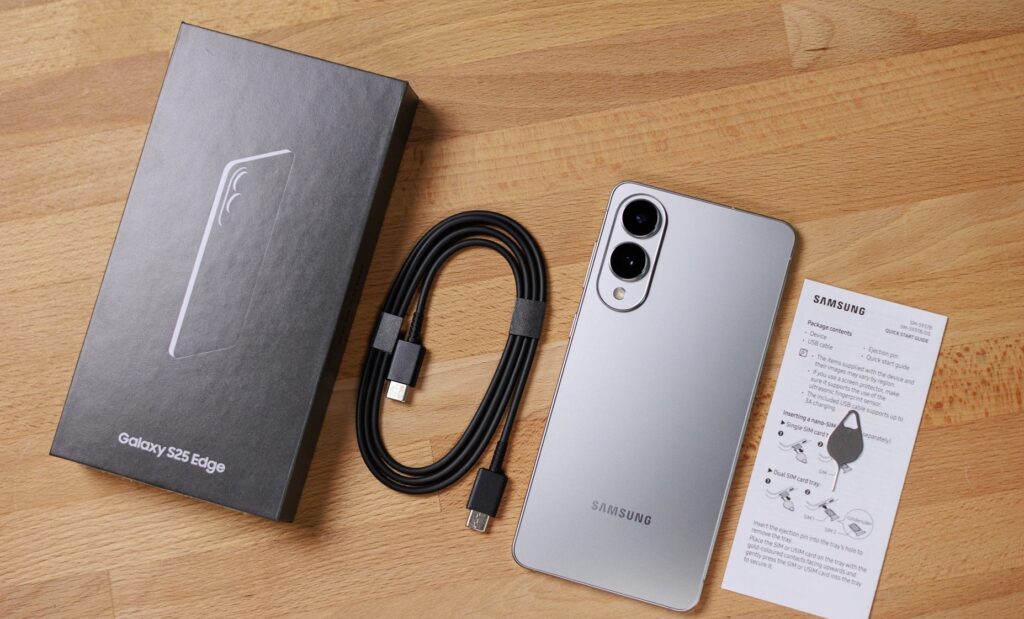
The Galaxy S25 Edge runs on Qualcomm’s Snapdragon 8 Elite chip, paired with 12GB of RAM, and it handles everyday use without missing a beat. Opening apps, navigating the UI, streaming, and casual gaming feel just as smooth as on the S25 Plus or Ultra. Most users say that unless you’re pushing the phone with heavy tasks like high-end gaming or video editing, you won’t really notice a difference between this and other recent flagship processors.
On paper, the S25 Edge slightly outpaces the Ultra in single and multi-core benchmarks, but trails the Plus in a few cases. Realistically, though, performance is consistent, especially for users in regions like Nigeria or Kenya, where stable performance during power cuts are regular. The S25 Edge stays cool during extended use, thanks to a redesigned vapour chamber that helps manage heat in its thinner frame. Even under 3DMark’s stress test, it holds up well, with only slight throttling after sustained use.
Battery life holds up fine for most users, even with social media, light gaming, and streaming. But the smaller battery doesn’t last as long as the one in the Ultra, and that becomes more obvious on a busy day. Users report needing a midday charge, and with Samsung still capping wired charging at 25W, it takes a bit longer than you’d hope. A half-hour gets you to around 54%, which is usable, but slower than the Ultra’s 71%.
There’s still a lot of power under the hood. You get UFS 4.0 storage, starting at 256GB, and enough muscle for productivity tools like Samsung DeX, which turns the phone into a desktop setup when plugged into a monitor. That’s useful for remote workers or students looking to get more from their phone. The S25 Edge may not top the chart in every category, but it’s fast, capable, and efficient enough for just about anything you’d reasonably do on a phone in 2025.
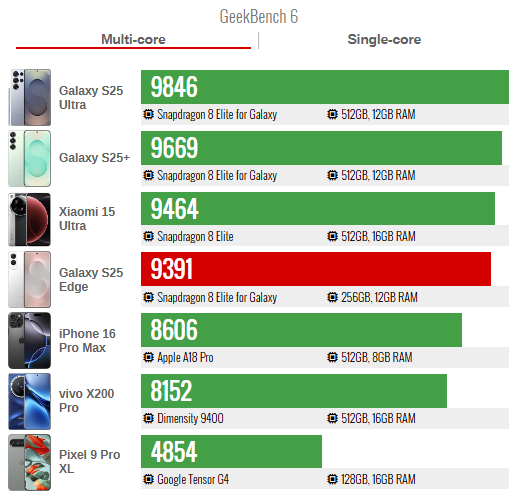
Cameras

The Galaxy S25 Edge continues Samsung’s tradition of mixing sleek design with capable cameras, but it does trim a few things to keep its ultra-thin profile. Unlike its siblings, it skips the telephoto lens, relying entirely on its 200MP main sensor and a 12MP ultrawide. That means zooming is done digitally, and while 2X and 4X shots hold up well, the quality takes a hit beyond that.

You’ll notice the camera bump is more prominent this time, and that does cause a bit of wobble on flat surfaces. It’s not a major issue unless you’re typing directly on a table. Still, the main camera performs confidently across most lighting conditions, and it’s likely using the same sensor as the S25 Ultra. Low-light shots come out strong, and Samsung’s processing sharpens up detail even after the shutter’s pressed.
For portraits, you’re working with 1X and 2X options. You won’t get the tighter 3X framing that makes portraits pop, but the edge detection and background blur still do a solid job. The ultrawide can be a bit inconsistent in exposure and detail, especially in tricky lighting, but it gets the job done for landscapes or group shots.

Video capture is another strong point, with crisp 8K and 4K options, solid stabilisation, and support for pro controls and RAW capture. There’s also a nice extra for creators: switching between front and back cameras while recording, something you won’t find on most rivals.
In terms of editing, Samsung’s built-in tools for removing objects and tweaking images come in handy, especially if you’re sharing straight from your phone. Selfies look just like what you’d expect from the rest of the S25 lineup—sharp, colourful, and social-ready. Zoom limitations aside, the S25 Edge camera holds up in most situations and feels dependable, even if it’s not the most versatile in Samsung’s current roster.
Software (UI, AI, Updates)
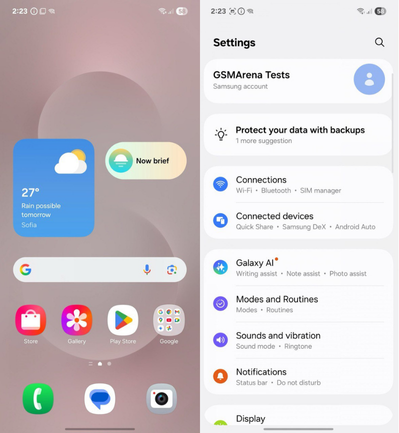
The Galaxy S25 Edge ships with the latest One UI 7 layered on Android 15, complete with Samsung’s full set of Galaxy AI tools. That includes new features like the Now Bar, which previews apps in real time, and Cross-app actions that blend nicely with Samsung’s native apps. You can search for an event and drop it into your calendar in one go. The AI-powered editing tools are here too—object eraser, noise remover, and even a sketch-to-image tool, all carried over from the wider S25 lineup. Generative editing continues to be a core part of the experience.
Third-party app integration still feels limited, though, and the software could use a bit more polish. Gesture navigation sometimes stutters, which is something Samsung has yet to fully smooth out. That said, One UI remains one of the cleanest takes on Android and feels familiar without being cluttered.
For users across Africa, Samsung’s software still stands out for its local language support and accessible layout. The SmartThings ecosystem is available too, tying into Galaxy Buds, TVs, and smart home devices, though real-world use depends on what’s available in your city.
Samsung’s promise of seven years of updates is ambitious. It sounds great on paper, but given how slowly One UI 7 rolled out to older phones, it’s fair to wonder how the S25 Edge will hold up over time in terms of timely updates.
Connectivity
Connectivity on the Galaxy S25 Edge looks solid across the board. It supports the key 5G bands used by networks like MTN, Safaricom, and Vodacom, so it should handle mobile data well in major African cities. Wi-Fi 7 is onboard too, with backward compatibility to older standards, which should make transitions between networks fairly seamless. Bluetooth 5.4 is included for more efficient connections, and there’s NFC for Samsung Pay or Google Pay depending on your region. Dual SIM support is also flexible, with the option for eSIM in select markets. On paper, it’s equipped to handle a range of connectivity needs without much hassle.
Our Verdict
If you’re curious about the Galaxy S25 Edge, it’s probably because of the size, and that’s fair. It’s noticeably thinner and lighter than most flagship phones, and if you’re coming from something heavier, you’ll feel the difference right away. That alone might be enough to sway some people.
But this design comes with trade-offs. The battery is smaller than what you’d find in the S25+ or Ultra, and there’s no telephoto camera. For $1,139, that might give you pause, especially when the S25+ is cheaper and more well-rounded, and the Ultra offers more of everything if you can handle the bulk.
So should you buy it? If weight and slimness matter more to you than battery life or zoom range, it’s worth checking out in person. Just don’t expect any magic—this is a beautifully built phone, not a breakthrough one.
Pricing & Availability
As of June 2025, the Galaxy S25 Edge is gradually making its way to stores across Africa.
In Nigeria, it’s averaging around ₦1,800,000 ($1,139), while pricing in Kenya is about KSh 120,000, and in Ghana, expect around GHS 12,000. South Africa’s expected price is R20,999, though it’s not widely available there yet, even on Samsung’s official store.
Retail availability varies by region. In Nigeria and Kenya, you’re more likely to find it at physical Samsung Experience Stores, carrier shops, or trusted retailers like Slot, Jumia, and PhonePlace.
Online listings are still catching up. As of now, Samsung’s official store is selling the 256GB version at $1,099.99 and the 512GB version at $1,219.99. Regional warranty policies differ, so it’s worth checking the fine print before you buy.
Get passive updates on African tech & startups
View and choose the stories to interact with on our WhatsApp Channel
Explore
